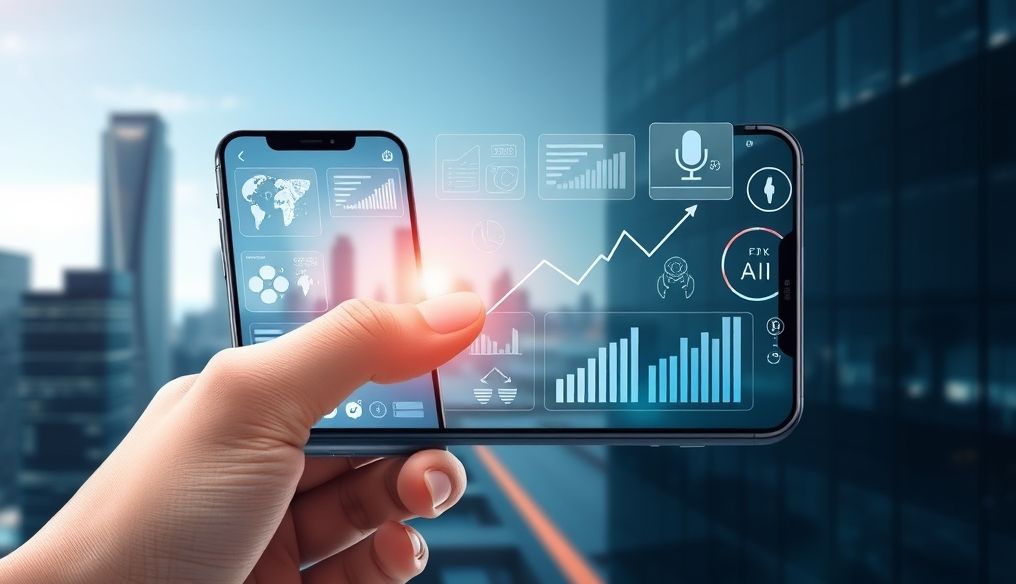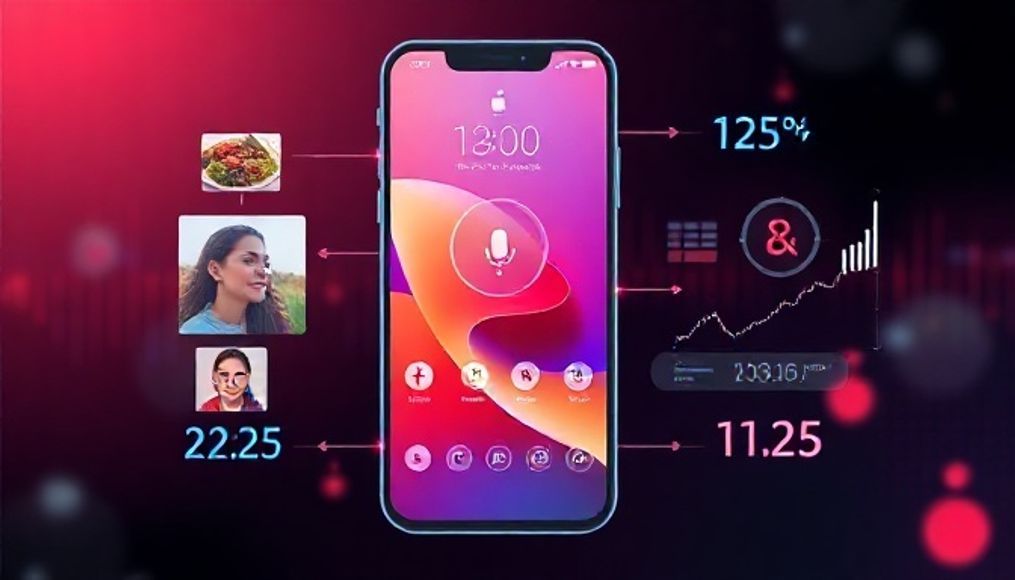Introduction: AI in Your Pocket
Artificial intelligence (AI) is no longer just a theoretical concept or part of science fiction movies. It has become a reality embodied in our smartphones, revolutionizing how we interact with technology and our daily lives. From improving the quality of photos we take to providing smart voice assistants, AI plays an increasingly important role in enhancing the user experience and making smartphones smarter and more efficient.
What is Artificial Intelligence and How Does it Relate to Smartphones?
Artificial intelligence is a branch of computer science that aims to develop systems and programs capable of simulating human mental abilities, such as learning, reasoning, problem-solving, and decision-making. In smartphones, AI manifests in a variety of applications and functions that aim to improve performance, provide a more personalized user experience, and increase efficiency.
Key Components of AI in Smartphones
AI in smartphones relies on several key components:
- Machine Learning: A set of algorithms that allows the phone to learn from data without explicit programming.
- Artificial Neural Networks: Computational models inspired by the structure of the human brain, used to process complex data and make decisions.
- Natural Language Processing (NLP): A technology that enables the phone to understand and respond to human language, as in voice assistants.
- Computer Vision: A technology that enables the phone to "see" and understand images and videos, used in facial recognition and improving image quality.
Applications of AI in Smartphones
There are numerous applications of AI in smartphones, including:
Smart Voice Assistants
Voice assistants like Apple's Siri and Google's Google Assistant are among the most prominent applications of AI in smartphones. These assistants are capable of understanding voice commands, answering questions, and performing various tasks, such as setting alarms, sending messages, and playing music.
Improving Photo and Video Quality
AI is used to improve the quality of photos and videos taken by smartphones. For example, AI can enhance lighting, reduce noise, increase detail sharpness, and recognize scenes and automatically adjust settings.
Facial Recognition and Biometric Security
Facial recognition technology powered by AI is used to unlock the phone and secure data. This technology is capable of accurately recognizing the user's face, even in low light conditions or when wearing glasses.
Personalizing the User Experience
AI is used to analyze user behavior and preferences, and provide personalized recommendations for apps, news, music, and advertisements. This helps users discover new and interesting content and makes the phone usage experience more enjoyable and effective.
Real-Time Language Translation
AI-powered translation apps allow for real-time language translation, making it easier to communicate with people who speak different languages. These apps can be used to translate text, audio, and even visual conversations.
Improving Battery Performance
AI is used to improve battery performance by analyzing phone usage patterns and automatically adjusting power consumption. For example, AI can close apps that are not used frequently, reduce screen brightness, and disable unnecessary features.
How Does Machine Learning Work in Smartphones?
Machine learning is the core of AI in smartphones. Here's how it works:
- Data Collection: The phone collects data from various sources, such as app usage, user location, and preferred settings.
- Model Training: The data is used to train a machine learning model. This model learns patterns and relationships in the data.
- Inference: Once the model is trained, it can be used for inference or prediction. For example, the model can predict which apps the user is likely to use at a particular time.
- Continuous Improvement: The model is continuously improved by collecting more data and retraining it.
Challenges and Concerns Related to AI in Smartphones
Despite the many benefits that AI offers in smartphones, it also raises some challenges and concerns:
- Privacy: AI requires the collection of large amounts of personal data, raising concerns about privacy and security.
- Bias: AI can be biased if trained on biased data, which can lead to unfair or discriminatory results.
- Security: AI can be vulnerable to cyberattacks, which can lead to data theft or service disruption.
- Dependence: Over-reliance on AI may lead to a reduction in reliance on human capabilities.
The Future of AI in Smartphones
AI is expected to continue to play an increasingly important role in smartphones in the future. We can expect to see more innovative applications of AI, such as:
- Enhanced Augmented Reality: AI will be used to enhance the augmented reality experience, making it more realistic and interactive.
- Personalized Healthcare: AI will be used to provide personalized healthcare, such as monitoring health, providing medical advice, and diagnosing diseases.
- Autonomous Driving Support: AI will be used to support autonomous driving in cars, making them safer and more efficient.
Conclusion
AI is revolutionizing smartphones, making them smarter, more efficient, and more personalized. Despite some challenges and concerns, the potential benefits of AI in smartphones are enormous. As this technology continues to evolve, we can expect to see more innovative applications that will change the way we interact with the world around us.




